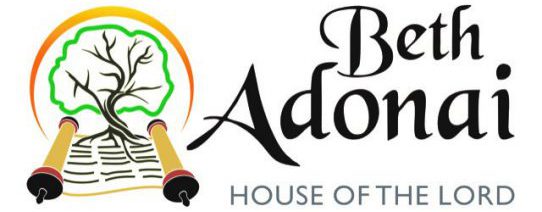Click here for Helpful To Know ~ Worship Etiquette Information
Beth Adonai Dress Guidelines for Services
Modesty is a difficult concept to communicate to the modern world. Our modern culture has accustomed us to brazenness. We no longer have a sense of shame or boundaries. We have forgotten how to blush.
In the biblical culture, modesty is much more than simple reticence about one’s own accomplishments and merits. In Hebrew, the word modesty comes from the verb tzana (צנע), a word that implies humility, submission and discretion. A modest person is a person who knows the difference between private and public, inside and outside, male and female.
Modest Dress and Behavior is a Torah value. King David wrote, “The honor of the King’s daughter is within” (Psalms 45:13). The value of true royalty comes not from her outward appearance, but from being created in God’s image. Dignity and royalty are inherent in every human being, to the extent that he or she develops a self-image based on one’s spiritual inner core – one’s soul. Once a woman’s self-identity is based on her soul and inner worth, she has no need to draw attention to her body because it doesn’t define her value. Modest dress as the means by which women can truly make a statement: My identity is defined by who I am inside, not by what I look like on the outside.
Why does it seem like modesty applies more to women than to men? Doesn’t this disharmony between body and soul apply to both men and women equally?
Yes. Modesty does in fact apply to everyone:
(God) tells you, man, what He requires of you, but to do justice, love kindness and walk modestly with your God. (Micah 6:8)
…And with the modest ones lies wisdom. (Proverbs 11:2)
As our congregation grows, we feel it was important to have clear guidelines on what we expect.
Men – Boys:
- No low pants / Pants to be worn at hip height (we don’t want your pants hanging by a thread and in danger of falling off)
- No undergarments showing
- No tank tops / muscle shirts
- No short shorts
- No midriffs
Ladies – Girls:
- No halter tops – no exposed shoulders
- No undergarments showing (above or below)
No short shorts / skirts (hemlines should extend as a minimum to the end of the fingertips when arms are straight against the body) - No form fitting, tight clothes
- No exposed flesh (belly and/or cleavage)
- Ladies: Prayer scarves are acceptable, However, we ask that you refrain from wearing anything that looks like tzitzit (fringes) or a tallit with fringes in the Congregation. If you wear one, an Usher will ask you to remove it. Please respect our policies.
Our clothing is one of our most elemental forms of communication. Long before our voice is heard, our clothes are transmitting multiple messages. From our attire, others immediately read not only such things as our sex, age, national identity, socio-economic status, and social position, but also our mood, our attitudes, our personality, our interests, and our values.
Your body is sacred. Respect it and do not defile it in any way. Through your dress and appearance, you can show that you know how precious your body is. You can show that you are a disciple of Yeshua and that you love Him.
Dress with respect. That’s a good rule to follow. Respect for yourself. Respect for others. Respect for God.
FEASTS & FESTIVALS
SPECIAL TIMES OF WORSHIP
For these times, especially Rosh HaShannah and Yom Kippur, we ask (as much as possible without creating a hardship) that your dress be fitting of an appointment with The King.
What does this mean? At a minimum:
- No shorts
- No T-shirts
- No athletic clothing
- Khakis or Dress Pants
- Polo-type Shirt, Collared Shirt,
Jacket / Tie - Dress / Suit
- Dress Pants
Rosh HaShanah Dress:
Choose an outfit dressier and more elegant than business casual, but less dressy than for a formal evening event. Think of what you might wear to an afternoon wedding. Dress modest and respectful. For women, this means their shoulders should be covered and not much leg showing above the knee. For men, this usually means a collared shirt and tie, and often a jacket.
Yom Kippur Dress:
Yom Kippur is the most sacred of the Jewish holidays, the Sabbath of Sabbaths. It is tradition to wear non-leather shoes. In fact, you will see people wear canvas sneakers. Start with a similarly modest and elegant outfit to the one you chose for Rosh Hashanah. Again, women should cover their shoulders and should show only a little bit of skin above the knee. Men at most synagogues wear ties and jackets. Most people will wear white if they can some men will wear a kittle (a traditional white robe) to symbolize Isaiah 1:18 says “Though your sins are like scarlet, they shall be as white as snow”
